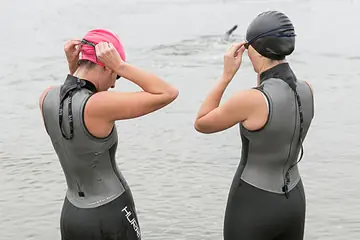
About 50 percent of an IRONMAN race is spent on the bike, compared to the swim (20 percent) and run (about 30). Because the bike makes up such a significant chunk of your race, overexerting yourself can lead to a rough run.
Think of it like this: If you pace yourself on the bike, you can use the extra energy you reserved to shave critical time off the run. If you overdo it on the bike you can run the risk of bonking on the run because you're out of steam, adding minutes (if not hours) to your total time. Instead, dial your bike back a notch to ensure you're able to stay strong through the entire 26.2 miles.
If you train properly there's no need to make any serious sacrifices. Instead, focus on the tactics that will help you successfully execute the bike without putting your body into overdrive, or tapping into important run energy reserves. Here are some tips to kick your bike endurance into high gear.
More: 6 Tips to Get Faster for Your Next Ironman
Set It Up
Getting a bike fit by a professional bike fitter can make all the difference in efficiency and can make the transition to the run less painful. As you start out in the sport, you should be in the least aggressive position (higher) on your bike, which means the aerobar pads on your handlebars will be almost level, or just below, the saddle. The bike position for triathlons is more forward than that of a road bike, so you need time to get used to the new position. Saddle pressure will also be affected, so make gradual adjustments over time as you work towards a more aggressive position.
Advanced Bike Maintenance for Triathletes
Interval Training
Tabata intervals are a high-intensity interval training program where you work at a high intensity for a short amount of time. In one study, a period of Tabata training increased trained athletes' V02 max by 14 percent and their anaerobic capacity by 28 percent. Practice eight sets of full-out sprints at about 90 percent capacity for 20 seconds, followed by 10 seconds of rest. While this is a super quick workout, you'll feel the effects and see the results. Try incorporating this into your bike workout every week and a half or so, and record your results. Over time, you'll notice that your sprints are faster and more consistent, and you'll improve your pedaling power to boot.
More: 6 Beginner's Tips for Clipless Pedals
Work Those Transitions
Keep your transitions up to snuff by incorporating bike-to-run workouts in your weekly training. A focus on the transition to the run will impact on how you do in the race overall, whether the bike portion is your weakest leg or not. Elite triathletes and newbies alike know just how heavy the legs can feel after riding, so train your legs to react quickly by doing regular brick sessions. This transitional training is just what your body needs to learn how to shunt blood that's pooling in your legs—and causing that heaviness—out to the rest of your body.
Incorporate these small details into your training and watch your power go up and your times come down.
More: 5 Newbie Cycling Questions Answered
 Sign up for an IRONMAN.
Sign up for an IRONMAN.
About the Author











Discuss This Article